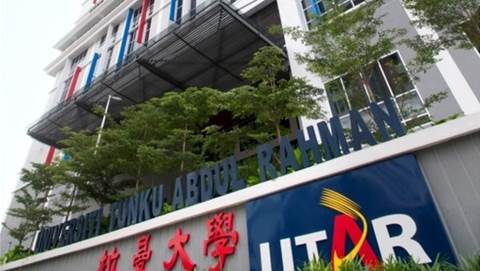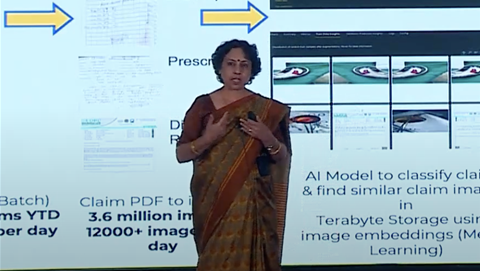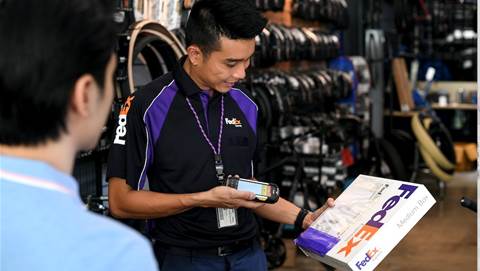Malaysia’s national oil and gas producer Petronas is hoping to be operating “more or less fully in the cloud” by the end of the year, with about 68 percent of workloads now migrated.
Cloud transformation lead Lisa Chan told the recent AWS Summit Asean 2022 that the company has been working to a “committed time schedule" to migrate 30 percent of workloads to the cloud in 2020, 60 percent in 2021 and 90 percent in 2022.
The remaining 10 percent of workloads are being sunsetted and decommissioned; “A lot of that is in progress right now,” Chan said.
While describing Petronas as technically still being “in the middle of our migration program right now”, the company is making fast progress towards its end goal.
“As of December last year, which is a big milestone for us, we hit about 62 percent of all our workloads in the cloud, which is the first time that Petronas has had more workloads in the cloud than we do on-premises,” Chan said,
“Right now I think we are at maybe 65 to 68 percent, and at the end of the year we aim to be almost 90 percent in the cloud, which basically means we are operating more or less fully in the cloud.”
The start of transformation
Petronas has been using AWS since about 2016, though Chan characterised uses of cloud between then and 2019 as “very transactional”.
It was only in 2019 that the cloud became a vehicle to power digital transformation at Petronas.
The company started out like many AWS customers do, agreeing to a truncated program of migration work aimed at building migration muscle and confidence, and getting quick wins on the board to make a business case for deeper transformation.
Petronas took 20 applications to the cloud in 50 days. There are a number of variations seen with these types of programs. In Australia, for example, National Australia Bank (NAB) did 30 in 50 days; and Bendigo and Adelaide Bank 30 in 30 days. Still, the result is effectively the same.
“All-in-all, we exited the exercise a bit more confident about the fact that we could actually do this migration,” Chan said.
MAP assistance
Still, it took a number of months to assemble a business case for broader migration and to convince and assure all of Petronas’ stakeholders that the program was achievable, safe, secure and cost-effective.
“We needed some early success like the 20-in-50 program to demonstrate we understood the landscape, we knew more or less how we were going to migrate, the strategy that we were going to take, and most importantly how much it was going to cost - how much money the company was going to save in the long run,” Chan said.
“This took months to get the business case together and align all stakeholders, but in the meantime, we didn't want to lose the momentum that we had gotten from the 20-in-50 program.
“We wanted to continue but we couldn’t continue without a few things: capabilities, expertise and also capacity.”
The answer came in the form of the AWS migration acceleration program (MAP), which introduced Petronas to industry partners that could do the work.
One aspect of MAP is that it offers “AWS service credits or partner investments, are intended to help customers offset one-time migration expenses”, and this was particularly attractive to Petronas.
“If we’re using [AWS’s] platforms, we might as well make this migration as cost-free as possible,” Chan said.
Target state
Petronas’ total IT environment comprised 900 applications and 3000 servers.
About half will wind up being both re-platformed to the cloud and refactored.
Others will be a more straight migration from running on a virtual machine to running on infrastructure-as-a-service, though Chan indicated these applications would still get some modernisation, if possible.
“At the very least, even when we are doing just a little bit to shift something to the cloud, we will at least use as many services as possible, so even if the application goes from VM to IaaS we’ll still upgrade the application’s database so it’s a managed database, for example,” she said.
So far, the migration has allowed Petronas to avoid some costs around hardware refreshes.
The majority of monetary benefits are anticipated to flow from 2023 onwards, once the migration is complete.
“Because we’re in the middle of our cloud migration journey right now, the way we modelled the business case is we see a peak in investment because you’re paying for the migration, to keep a data centre open, and for the workloads in the cloud,” she said.
“Then, once you reach the end of the migration, which we hope to do at the end of this year, next year we will start to remove some of that operational cost like our data centres, for example.
“We’re no longer reliant on them so we’ll start to see [costs] come down, but to date, there have not been as significant savings yet. There will be next year.
“This year we have 10-15 percent savings in terms of cost avoidance so like new servers. We are no longer buying hardware for our data centre.”
Chan said that Petronas is giving its staff substantial access to cloud training and is paying for certifications as part of the migration.
Digital's contribution to strategy
In the mid-to-long term, the digital transformation will help Petronas’ group digital function to contribute to the company's Moving Forward Together (MFT) strategy.
This aims to improve cash flow by 50 percent by 2025, generate 30 percent of revenue by 2030 from new business; and achieve net-zero emissions by 2050.
“How group digital contributes to this agenda? We need to be conscious about the operational cost that we create, so cloud is one of the ways that we are avoiding that,” Chan explained.
“The whole brick-and-mortar business that we used to run in the data centres, this generated a lot of cost and it would have continued to have done so if we had stuck with that.
“Secondly, a lot of the new business has very different digital demands, so we anticipate there’s going to be interesting new applications around carbon emissions, tracking, analysis, and even perhaps applications that allow consumers to choose clean energy.
“And lastly, when we move our workloads to the cloud, we are expecting our partners and our ecosystem vendors to come with us on this green and sustainability journey as well.
“Not that we are shifting the problem to [AWS], but our stakeholders and financiers put pressure on us to become more sustainable, so it’s good for business, and we need to work with our partners to make sure whatever it is we host in the cloud is hosted in a green, sustainable and responsible way.”









